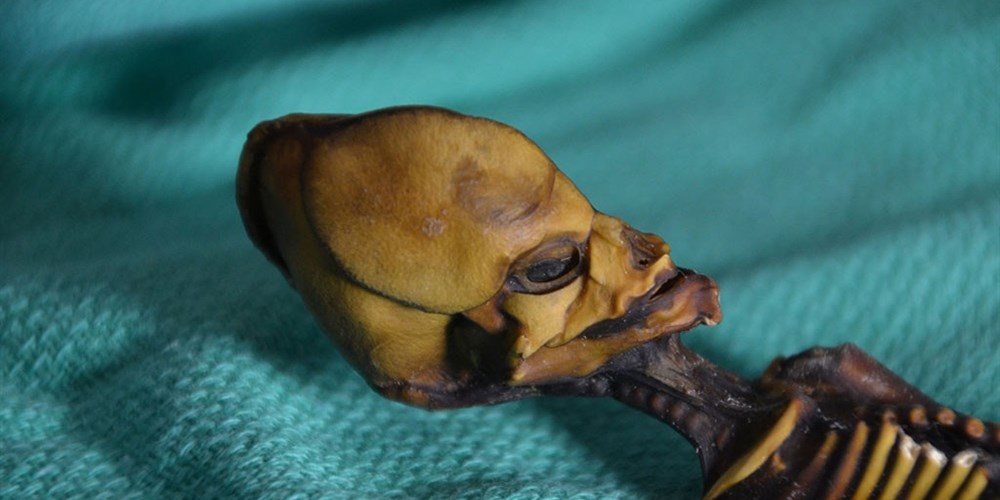World News – It looks like a tiny little alien, with its elongated head and oval eyeholes.
The mummified skeleton found in Chile’s Atacama desert has been the source of many an alien-conspiracy theory, despite many studies showing the poor thing was human.
Now, genetic research shows the six-inch-long skeleton belonged to a human fetus that had multiple genetic defects. They may have been caused by the mother’s exposure to chemicals from nitrate mining, the researchers said.
And the researchers at Stanford University and the University of California, San Francisco say their analysis of the little skeleton could help living people here on Earth, because it’s pointed them to a batch of damaging genetic mutations that doctors did not know about before.
The skeleton puzzled researchers and excited conspiracy theorists when it was found in 2003 because it was so strange. Tiny and deformed, it seemed human-like but was missing two of 12 ribs and had features that made it look adult-like, despite its very small size.
Doctors soon identified it as human and possibly the remains of a miscarried fetus, but some of the deformities defied analysis — further feeding suspicions of some kind of cover-up.
Garry Nolan of Stanford University decided to do a deep dive into the DNA of the skeleton, which was only about 40 years old and well preserved from having been mummified in the super-dry Atacama.
“You can’t look at this specimen and not think it’s interesting; it’s quite dramatic,” Nolan said in a statement.
The analysis turned up many different mutations.
“In the Ata specimen, we have identified known mutations in genes associated with disease such as cranioectodermal dysplasia and Greenberg skeletal dysplasia, which each produce (physical effects) similar to that observed in the Ata specimen,” they wrote in their report, published in the journal Genome Research.
For instance, patients with cranioectodermal dysplasia can have elongated skulls with prominent ridges.
Mutations in several genes appear to have caused development of a club-shaped leg bone — the femur — they said, while other mutations led to a small body length, and four other mutations caused deformities in the arm bones.
The baby also appears to have had a premature aging disease that gave the bones features that made them appear to belong to a six-year-old child instead of a six-month fetus.
“The diseases identified were mostly associated to bone disorders, including scoliosis, Ehlers-Danlos syndrome (a disease of the joints and connective tissue), and musculoskeletal abnormalities,” they added.
There were other genetic defects that would have killed any newborn, including one that would have made it impossible to breathe normally.
“Given the size of the specimen and the severity of the mutations described above, it seems likely the specimen was a preterm birth,” Nolan’s team wrote.
“Although we can only speculate as to the cause for multiple mutations in Ata’s genome, the specimen was found in La Noria, one of the Atacama Desert’s many abandoned nitrate mining towns, which suggests a possible role for prenatal nitrate exposure leading to DNA damage.”
High doses of nitrates can cause birth defects.
Atul Butte of UCSF said the research was interesting but also offers an important lesson about checking out all the possibilities.
“For me, what really came of this study was the idea that we shouldn’t stop investigating when we find one gene that might explain a symptom. It could be multiple things going wrong, and it’s worth getting a full explanation, especially as we head closer and closer to gene therapy,” Butte said in a statement.
“We could presumably one day fix some of these disorders, and we’re going to want to make sure that if there’s one mutation, we know that — but if there’s more than one, we know that too.”
by Maggie Fox, NBCNews.com

